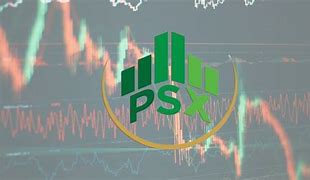Islamabad, Dec 30: The Pakistan Stock Exchange (PSX) has continued its strong performance for the second year in a row, with the KSE-100 index seeing an impressive 80% growth in 2024.
As of December 28, the index reached 111,351 points, up from 62,052 points the previous year, and 40,420 points in December 2022, reflecting a 46% increase by the close of 2023.
The KSE-100 index hit an intra-day high of 117,000 points during 2024 despite foreign portfolio investors’ selling due to rebalancing activities, as noted by Waqas Ghani Kukaswadia of JS Global.
In fiscal year 2023-24, the KSE-100 surged by 89.24% to 78,445 points, compared to 41,453 points in 2023. This led to a market capitalization of Rs10.37 trillion, nearing the peak levels seen in 2017.
The KSE-100 posted its highest return since 2002 in CY24, at 70%, making it the second best-performing market globally, after Argentina. The index is expected to reach 165,215 points by December 2025, marking a 55.5% potential upside.
The year also saw remarkable growth in trading activity, with a record 151.4 billion shares traded, almost double the previous year.
Daily trade value averaged Rs22.1 billion, reflecting strong investor confidence. Key macroeconomic reforms, including lower interest rates and a sharp decrease in inflation, played a pivotal role in supporting the market.
The PSX welcomed 11 new listings in 2024, including Symmetry Group and TPL REIT Fund-I, raising Rs103.3 billion. The exchange also introduced two new ETFs, including the Mahaana Islamic Index ETF, offering new investment options.
Sectors such as banks, fertilizer, energy, and technology performed strongly, benefiting from currency stability, monetary easing, and growth-oriented reforms. Textile exports and technology are expected to drive long-term market growth.
Foreign investor interest in Pakistan’s equities has increased, bolstered by the country’s improved position in the MSCI Frontier Markets Index and the anticipated reclassification to the MSCI Emerging Markets Index. The PSX introduced several innovations, including a new primary market auction system for government debt securities and a My Portfolio app to enhance market access.
Pakistan’s economic outlook remains modest, with a 2.5% GDP growth in FY24. Projections for FY25 and FY26 indicate growth of 2.7-3.2% and 4.3%, respectively. The fiscal deficit is expected to improve, supported by structural reforms in taxation, energy, and investment. Despite low foreign direct investment, the PSX’s strong performance is attributed to low inflation, easing monetary policies, and foreign capital inflows.
The Special Investment Facilitation Council (SIFC) aims to attract $5 billion in foreign direct investment annually, while CPEC Phase 2.0 focuses on infrastructure, renewable energy, and industrial development, expected to transform Pakistan’s economic landscape.









